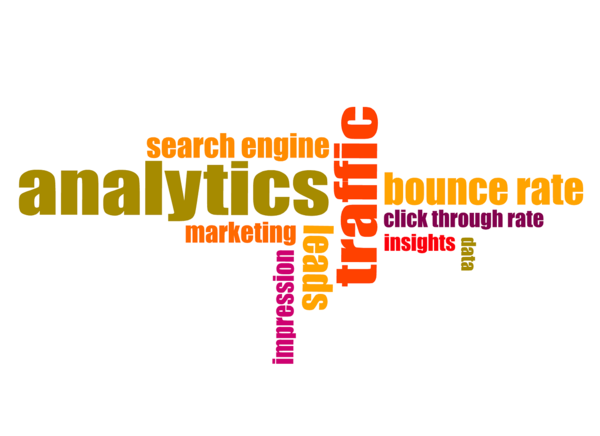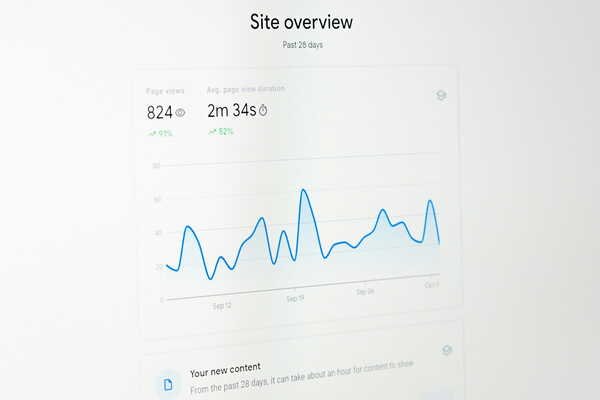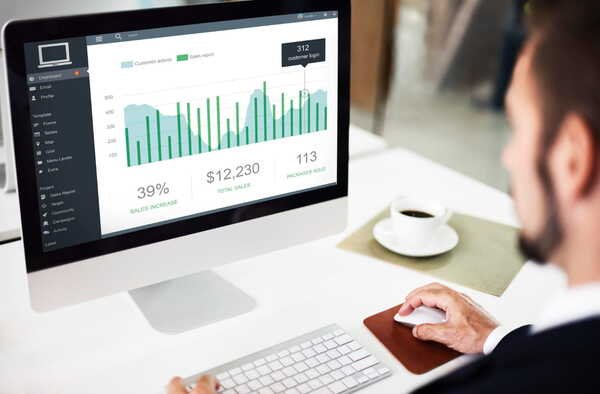Key Google Ads Metrics Every Marketer Should Track
Understanding Google Ads metrics helps you make smarter decisions. These key performance indicators show campaign health, budget efficiency, and conversion success. Tracking the right metrics transforms raw data into actionable insights for better ROI.
Last month, Sarah stared at her Google Ads dashboard. Numbers everywhere. Click-through rates. Conversion rates. Quality scores. Her campaigns were bleeding money. She didn’t understand why. The metrics looked like a foreign language. She kept adjusting bids blindly. Nothing improved. Her boss questioned the ad spend. Sarah felt overwhelmed and lost. She needed clarity on what these numbers actually meant. Many marketers face this exact struggle daily.
Let’s decode these essential metrics together. You’ll learn what each number tells you. More importantly, you’ll understand how to use them.

Understanding Click-Through Rate (CTR) and Its Impact
Click-through rate measures campaign relevance. It shows the percentage of people who click your ad. Calculate CTR by dividing clicks by impressions. A 2% CTR means 2 clicks per 100 views.
CTR directly affects your Quality Score. Google rewards relevant ads with lower costs. Higher CTRs mean better ad positions too. Your ads appear more often when CTR improves.
Industry benchmarks vary significantly by sector. Search ads average 3.17% CTR across industries. Display ads typically see 0.46% CTR. Shopping campaigns hover around 0.86% CTR. Your specific industry might differ considerably.
Low CTR signals several potential issues. Your keywords might target wrong audiences. Ad copy could lack compelling messages. Landing pages may not match search intent. Sometimes your offer simply isn’t competitive enough.
Improving CTR requires systematic testing. Write multiple ad variations focusing on benefits. Include emotional triggers and clear value propositions. Add relevant ad extensions for more visibility. Test different calls-to-action to find winners.
Monitor CTR by device type too. Mobile users behave differently than desktop users. Tablet traffic often shows unique patterns. Adjust your strategies based on device performance. Create device-specific campaigns when significant differences emerge.
Time of day affects CTR dramatically. Business audiences click more during work hours. Consumer products perform better evenings and weekends. Use ad scheduling to maximize relevant impressions. This Google Ads management service can help optimize timing strategies.

Conversion Rate: The Ultimate Performance Indicator
Conversion rate reveals your true campaign effectiveness. It measures the percentage completing desired actions. These actions include purchases, signups, or downloads. Calculate by dividing conversions by total clicks.
Industry conversion rates vary widely too. E-commerce averages 2.81% on Google Ads. B2B services often see 2.41% rates. Legal services can reach 6.98% conversions. Know your industry standards for context.
Multiple factors influence conversion rates significantly. Landing page quality matters most. Page load speed affects user patience. Mobile optimization becomes increasingly critical. Trust signals like testimonials boost confidence.
Conversion tracking must capture all valuable actions. Phone calls generate significant business value. Form submissions indicate genuine interest. Newsletter signups build future relationships. Download requests show content engagement.
Micro-conversions provide early optimization signals. Page scroll depth indicates content relevance. Video watch time shows engagement levels. Add-to-cart actions signal purchase intent. These smaller actions predict macro-conversions.
Testing improves conversion rates systematically. Try different landing page headlines. Experiment with form field quantities. Test button colors and placement. Change value propositions and benefits messaging.
Your conversion rate directly impacts profitability. Higher rates mean lower acquisition costs. You can bid more aggressively too. This creates a competitive advantage over time. Focus relentlessly on conversion optimization for success.

Cost Per Click (CPC) and Budget Management
Cost per click determines your traffic costs. It’s the price for each visitor. Average CPC varies by industry and competition. Legal keywords cost $6.75 on average. E-commerce typically pays $1.16 per click.
Several factors influence your actual CPC. Quality Score plays the biggest role. Ad relevance reduces costs significantly. Landing page experience matters too. Historical account performance affects pricing.
Bidding strategies impact CPC directly. Manual bidding gives precise control. Automated strategies optimize for goals. Target CPA focuses on conversions. Maximize clicks prioritizes traffic volume. Choose strategies matching your business objectives. Our comprehensive Google Ads Strategy guide covers advanced approaches.
Competition drives CPC fluctuations constantly. Seasonal trends affect pricing patterns. New competitors increase auction pressure. Economic conditions influence advertiser budgets. Monitor CPC trends for budget planning.
Reducing CPC requires multiple tactics. Improve Quality Scores through relevance. Use negative keywords preventing irrelevant clicks. Target long-tail keywords with less competition. Create tightly themed ad groups. Test different match types systematically.
Geographic targeting affects CPC significantly. Urban areas cost more typically. International markets show pricing variations. Local campaigns often cost less. Dayparting reduces costs during off-hours. Smart targeting preserves budget efficiency.
Budget pacing prevents early depletion. Set realistic daily limits initially. Monitor spending patterns closely. Adjust bids based on performance. Use shared budgets across campaigns. This ensures consistent traffic flow.

Quality Score: Google’s Relevance Metric
Quality Score measures ad relevance comprehensively. Google assigns scores from 1-10. Higher scores mean better performance. This metric affects everything important.
Three components determine Quality Score. Expected click-through rate predicts performance. Ad relevance matches keywords to ads. Landing page experience evaluates user value. Each factor contributes equally to scores.
Quality Score directly impacts campaign costs. Higher scores reduce CPC significantly. You’ll win more auctions too. Ad positions improve with better scores. This creates compound benefits over time.
Improving Quality Score requires systematic work. Research user intent thoroughly first. Write ads matching search queries exactly. Create dedicated landing pages per ad group. Ensure fast page load speeds. Include relevant content throughout pages.
Keyword relevance drives score improvements. Use exact match for precision. Include keywords in ad headlines. Mirror language in landing pages. Remove irrelevant keywords quickly. Group similar keywords together tightly.
Landing page optimization boosts scores dramatically. Match content to ad promises. Include clear calls-to-action prominently. Ensure mobile responsiveness completely. Add trust signals and testimonials. Improve page speed relentlessly.
Monitor Quality Score changes regularly. Check scores at keyword level. Identify low-scoring terms quickly. Either improve or remove them. Focus efforts on high-volume keywords. Small improvements create big impacts. Professional SEO services complement Quality Score optimization.
Return on Ad Spend (ROAS) Calculations
ROAS measures campaign profitability directly. Calculate by dividing revenue by spend. A 4:1 ROAS means $4 revenue per dollar. This metric guides investment decisions.
Target ROAS varies by business model. E-commerce needs 4:1 minimum typically. Service businesses might accept 2:1. Consider lifetime value for accuracy. Factor in profit margins too.
Attribution models affect ROAS calculations. Last-click credits final touchpoints only. First-click rewards initial interactions. Linear spreads credit equally. Time-decay weights recent touches more. Data-driven uses machine learning. Choose models matching your sales cycle. Understanding Advanced Bidding Strategies helps maximize ROAS effectively.
Improving ROAS requires holistic optimization. Increase average order values strategically. Focus on high-margin products. Reduce wasted spend aggressively. Target profitable customer segments. Test pricing strategies carefully.
Conversion value tracking enables ROAS measurement. Import transaction data accurately. Include all revenue sources. Track phone call values. Monitor offline conversions too. Comprehensive tracking improves optimization decisions.
Seasonality impacts ROAS significantly. Holiday periods boost performance. Summer months might decline. Plan budgets accounting for fluctuations. Adjust targets based on history. Maintain realistic expectations always.
Long-term ROAS matters most ultimately. Initial purchases might lose money. Repeat customers generate profits. Email marketing reduces acquisition costs. Referrals provide free traffic. Consider complete customer journeys holistically.

Impression Share and Market Coverage
Impression share reveals market opportunity. It shows your ad coverage percentage. Calculate by dividing impressions by potential. Low share means missed opportunities.
Several factors limit impression share. Budget constraints restrict coverage most. Low bids lose auction competitions. Poor Quality Scores reduce eligibility. Ad scheduling limits exposure windows.
Search impression share indicates demand. Higher shares mean market dominance. Monitor competitor activity through changes. Sudden drops signal new competition. Gradual declines suggest optimization needs.
Lost impression share provides specific insights. Budget-limited campaigns need more funds. Rank-limited campaigns need optimization work. Address the specific limitation identified. Don’t increase budgets blindly.
Competitive metrics add context. Auction insights show competitor overlap. Position above rate indicates dominance. Outranking share measures direct competition. Use these for strategic planning. Our web design services create landing pages that improve competitive positioning.
Target impression share bidding automates coverage. Set desired impression share goals. Google adjusts bids automatically. This works for brand campaigns. Use cautiously for generic terms.
Geographic impression share varies significantly. Urban markets show more competition. Rural areas offer easier dominance. International markets present unique opportunities. Analyze share by location strategically.

Using Metrics for Campaign Optimization
Successful optimization requires metric prioritization. Focus on business outcomes first. Revenue and conversions matter most. Volume metrics come second. Vanity metrics deserve least attention.
Create measurement frameworks before launching. Define success metrics clearly upfront. Set realistic performance benchmarks. Establish review schedules consistently. Document all changes made. Track results over time.
Different campaign types need different metrics. Brand campaigns prioritize impression share. Shopping campaigns focus on ROAS. Lead generation tracks cost per acquisition. Display remarketing monitors frequency. Match metrics to campaign goals.
Regular reporting drives continuous improvement. Weekly reviews catch problems early. Monthly analysis reveals trends. Quarterly planning sets strategic direction. Annual reviews guide major changes. Consistency enables pattern recognition.
Testing methodology improves results systematically. Change one variable at a time. Run tests for statistical significance. Document hypotheses before starting. Analyze results objectively always. Scale winners; kill losers quickly.
Automation tools save time significantly. Set alerts for metric changes. Use scripts for routine tasks. Create custom dashboards efficiently. Focus human time on strategy. Let machines handle repetitive work.
Connect with Eclipse Marketing for expert guidance. Professional management improves all metrics. Experience drives better decisions. Tools alone aren’t enough. Human expertise remains irreplaceable. Success requires both technology and strategy.
FAQs
What is a good CTR for Google Ads?
Good CTR depends on your industry. Search ads average 3-4% CTR. Shopping campaigns see 0.6-1% typically. Compare against industry benchmarks. Focus on continuous improvement over absolutes.
How often should I check my Google Ads metrics?
Check critical metrics like spend daily. Review performance metrics weekly. Analyze trends monthly. Major strategy reviews happen quarterly. Automate alerts for significant changes.
Which Google Ads metric is most important?
Conversion rate and ROAS matter most. They directly measure business impact. Other metrics support these goals. Focus on profit, not vanity metrics. Let business objectives guide priorities.
What causes Quality Score to drop?
Poor CTR hurts scores most. Irrelevant keywords reduce ratings. Slow landing pages penalize performance. Mismatched ad copy lowers relevance. Regular optimization prevents drops.
How do I improve my Google Ads ROI?
Focus on conversion rate optimization first. Reduce wasted spend through negatives. Improve Quality Scores systematically. Test different bidding strategies. Monitor and adjust continuously. Contact us for personalized optimization strategies.

Mike has over 5 years of experience helping clients improve their business visibility on Google. He combines his love for teaching with his entrepreneurial spirit to develop innovative marketing strategies. Inspired by the big AI wave of 2023, Mike now focuses on staying updated with the latest AI tools and techniques. He is committed to using these advancements to deliver great results for his clients, keeping them ahead in the competitive online market.
